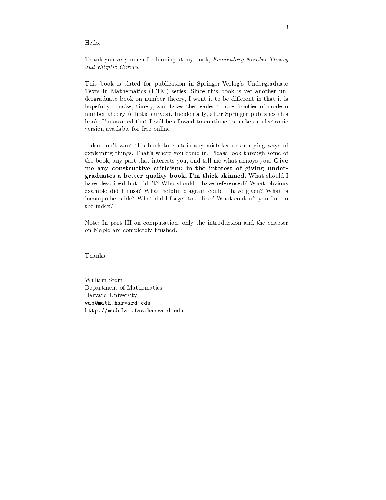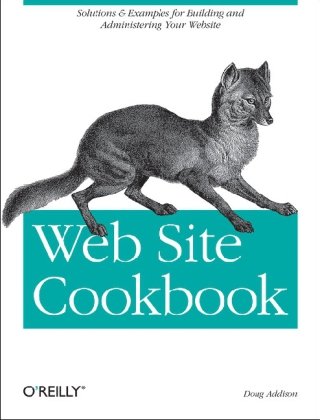Inc. Cisco Systems9781587050053, 1587050056
Table of contents :
Acknowledgments……Page 1
Document Conventions……Page 2
General Problem-Solving Model……Page 3
Step 4 Create an action plan based on the remaining potential problems. Begin with the most likel………Page 4
Preparing for Network Failure……Page 5
Using show Commands……Page 7
Using debug Commands……Page 8
Using the ping Commands……Page 9
CiscoView……Page 10
The VlanDirector Switch Management Application……Page 11
Volt-Ohm Meters, Digital Multimeters, and Cable Testers……Page 12
Network Analyzers……Page 13
3. Troubleshooting Hardware and Booting Problems……Page 15
Network Booting Tips……Page 16
Timeouts and Out-of-Order Packets……Page 17
Cisco 7500 Series Startup……Page 18
Table3-1 Hardware: Cisco 7500 Series Startup Problems and Solutions……Page 21
Cisco 7000 Series Startup……Page 23
Table3-2 Hardware: Cisco 7000 Series Startup Problems and Solutions……Page 25
Cisco 4000 Series Startup……Page 26
Cisco 2500 Series Startup……Page 28
Catalyst 5000 Series Startup……Page 30
Table3-5 Hardware: Catalyst 5000 Series Startup Problems and Solutions……Page 32
Catalyst 2900 Series Startup……Page 33
Testing and Verifying Replacement Parts……Page 34
Booting: Router Fails to Boot from Flash Memory……Page 35
Table3-7 Booting: Router Fails to Boot from Flash Memory……Page 37
Booting: Vector Error Occurs When Booting from Flash Memory……Page 40
Table3-8 Booting: Vector Error Occurs When Booting from Flash Memory……Page 42
Booting: Router Partially Boots from Flash andDisplaysBootPrompt……Page 44
Table3-9 Booting: Router Partially Boots from Flash and Displays Boot Prompt……Page 45
Booting: Router Cannot Network Boot from TFTP Server……Page 46
Table3-10 Booting: Router Cannot Network Boot from TFTP Server……Page 47
Booting: Router Cannot Network Boot from Another Router……Page 49
Table3-11 Booting: Router Cannot Network Boot from Another Router……Page 50
Booting: Invalid Routes Prevent Network Booting……Page 51
Booting: Client ARP Requests Timeout During Network Boot……Page 52
Table3-14 Booting: Client ARP Requests Timeout During Network Boot……Page 54
Table3-15 Booting: Undefined Load Module Error When Network Booting……Page 55
Booting: Router Is Stuck in ROM Monitor Mode……Page 56
Booting: Scrambled Output When Booting from ROM……Page 57
Table3-19 Booting: Local Timeouts Occur When Booting from ROM……Page 58
Table3-20 Booting: Unresponsive Terminal Connection to Unconfigured Access Server……Page 59
How to Recover a Catalyst 6000 fromaCorruptedorMissingBootImage (from CCO)……Page 60
Recovery Procedures……Page 61
Method 1: Boot Loader Recovery Procedure Using a Cisco 4500/4700 Router……Page 62
Step 1 Remove the boot Flash from the Catalyst 6000, and put it into the 4500/4700 router. Ensure………Page 63
Step 3 When you finish copying the image, take the SIMM back to the same slot in the Catalyst 6000…….Page 64
Method 2: OOB Boot Loader Recovery Procedure Using xmodem……Page 67
Loading the Catalyst IOS Image……Page 70
Loading the Catalyst OS Image……Page 72
Introduction……Page 77
Introduction……Page 80
Cisco Catalyst 4000 Startup……Page 83
Troubleshooting……Page 86
Ethernet and IEEE 802.3……Page 87
Table4-2 Back-off Algorithm……Page 88
Autonegotiation……Page 89
Table4-3 Ethernet Version 2 and IEEE 802.3 Physical Characteristics……Page 90
Frame Formats……Page 91
Figure4-2 Ethernet and IEEE 802.3 Frame Formats……Page 92
Table4-5 Troubleshooting Procedures for Common Ethernet Media Problems……Page 93
Usage Guidelines……Page 94
Table4-6 show interfaces ethernet Field Descriptions……Page 95
FDDI Technology Basics……Page 99
Physical Connections……Page 100
Traffic Types……Page 101
Figure5-4 Station Failure, Ring Recovery Configuration……Page 102
Figure5-5 Failed Wiring, Ring Recovery Configuration……Page 103
Frame Format……Page 104
CDDI……Page 105
Table5-1 Media Problems: FDDI……Page 106
Usage Guidelines……Page 107
Sample Displays……Page 108
Table5-2 show interfaces fddi Field Descriptions……Page 109
Token Ring/IEEE 802.5 Comparison……Page 117
Token Passing……Page 118
Fault Management Mechanisms……Page 119
Tokens……Page 120
Troubleshooting Token Ring……Page 121
Table6-1 Media Problems: Token Ring……Page 122
Command Mode……Page 124
Table6-2 show interfaces tokenring Field Descriptions……Page 125
Internet Protocols……Page 129
The Network Layer……Page 130
Figure7-2 The IP Packet Format……Page 131
Figure7-3 Class A, B, and C Address Formats……Page 132
Internet Routing……Page 133
The Transport Layer……Page 134
Figure7-6 The TCP Packet Format……Page 135
Table7-1 Internet Protocol/Application Mapping (with Common Port Numbers)……Page 136
ping……Page 137
Example7-2 ping Returning Three Values Separated with the Slash “/,” the Minimum, Average, and M………Page 138
traceroute……Page 139
Example7-3 (Taken from a Cisco Router) traceroute……Page 140
Packet Debugging……Page 141
Troubleshooting Local Connectivity Problems……Page 143
Check for Local Connectivity……Page 144
Check Cable Connections……Page 145
Determining Where to Start……Page 146
Check for Connectivity……Page 147
Generic……Page 148
FTP……Page 149
MAIL (IMAP, POP, and SMTP)……Page 150
Troubleshooting Domain Name Server Problems……Page 151
For More Information……Page 152
Novell Technology Basics……Page 153
The Network Layer……Page 154
Figure8-2 IPX Packet Format……Page 155
Upper-Layer Protocols……Page 156
Novell IPX: Client Cannot Connect to Server on Same LAN……Page 157
Table8-1 Novell IPX: Client Cannot Connect to Server on Same LAN……Page 158
Novell IPX: Client Cannot Connect to Server on Remote LAN……Page 159
Table8-2 Novell IPX: Client Cannot Connect to Server on Remote LAN……Page 160
Novell IPX: Clients Cannot Connect to Server over PSN……Page 162
Table8-3 Novell IPX: Client Cannot Connect to Server over PSN……Page 163
Novell IPX: Client Cannot Connect to Server over ISDN……Page 165
Novell NetBIOS: Applications Cannot Connect to Server over Router……Page 166
Table8-5 Novell NetBIOS: Applications Cannot Connect to Server over Router……Page 167
IPX RIP: No Connectivity over IPX RIP Router……Page 169
Table8-6 IPX RIP: No Connectivity over IPX RIP Router……Page 171
IPX RIP: SAP Updates Not Propagated by Router……Page 175
Table8-7 IPX RIP: SAP Updates Not Propagated by Router……Page 176
IPX Enhanced IGRP: No Connectivity overIPXEnhancedIGRPRouter……Page 178
Table8-8 IPX Enhanced IGRP: No Connectivity over IPX Enhanced IGRP Router……Page 181
IPX Enhanced IGRP: Routers Not Establishing Neighbors……Page 183
Table8-9 IPX Enhanced IGRP: Routers Not Establishing Neighbors……Page 184
IPX Enhanced IGRP: SAP Updates Not Propagated by Router……Page 185
Table8-10 IPX Enhanced IGRP: SAP Updates Not Propagated by Router……Page 186
IPX Enhanced IGRP: Router Stuck in Active Mode……Page 188
Table8-11 IPX Enhanced IGRP: Router Stuck in Active Mode……Page 191
Novell IPX: Intermittent Connectivity……Page 193
Table8-12 Novell IPX: Intermittent Connectivity……Page 194
Novell IPX: Slow Performance……Page 197
Table8-13 Novell IPX: Slow Performance……Page 198
Table8-14 Novell SAPs, Their Descriptions, and Their Decimal and Hex Values……Page 199
AppleTalk Technology Basics……Page 207
Media Access……Page 208
Protocol Address Assignment……Page 209
Network Entities……Page 210
Datagram Delivery Protocol……Page 211
Figure9-4 A Sample AppleTalk Routing Table……Page 212
Figure9-6 An AppleTalk Tunnel……Page 213
Figure9-7 The AURP Architectural Model……Page 214
Upper-Layer Protocols……Page 215
AppleTalk Configuration and Troubleshooting Tips……Page 216
Table9-1 AppleTalk Problem-Prevention Techniques……Page 217
Using the test appletalk and ping appletalk Commands……Page 218
AppleTalk Discovery Mode……Page 219
AppleTalk: Users Cannot Access Zones or Services……Page 220
Table9-2 AppleTalk: Users Cannot Access Zones or Services……Page 222
Phase1 and Phase2 Rule Violations……Page 225
AppleTalk: Zones Missing from Chooser……Page 226
Table9-4 AppleTalk: Zones Missing from Chooser……Page 227
AppleTalk: Network Services Intermittently Unavailable……Page 231
Table9-6 AppleTalk: Network Services Intermittently Unavailable……Page 232
AppleTalk: Old Zone Names Appear in Chooser (Phantom Zones)……Page 235
Table9-7 AppleTalk: Old Zone Names Appear in Chooser (Phantom Zones)……Page 236
AppleTalk: Connections to Services Drop……Page 237
Table9-8 AppleTalk: Connections to Services Drop……Page 238
AppleTalk: Interface Fails to Initialize AppleTalk……Page 239
Table9-9 AppleTalk: Interface Fails to Initialize AppleTalk……Page 240
AppleTalk Enhanced IGRP: Clients Cannot Connect to Servers……Page 241
AppleTalk Enhanced IGRP: Routers Not Establishing Neighbors……Page 242
Table9-1 AppleTalk Enhanced IGRP: Routers Not Establishing Neighbors……Page 243
AppleTalk Enhanced IGRP: Routes Missing from Routing Table……Page 244
AppleTalk Enhanced IGRP: Router Stuck in Active Mode……Page 245
Table9-4 AppleTalk Enhanced IGRP: Router Stuck in Active Mode……Page 247
AURP: Routes Not Propagated Through AURP Tunnel……Page 248
FDDITalk: No Zone Associated with Routes……Page 249
ARA: ARA Client Unable to Connect to ARA Server……Page 250
ARA: Connection Hangs After “Communicating At…” Message……Page 251
ARA: Cannot Send or Receive Data over ARA Dialin Connection……Page 252
ARA: Slow Performance from Dialin Connection……Page 253
Table9-10 ARA: Slow Performance from Dialin Connection……Page 254
SDLC……Page 255
Frame Format……Page 256
Figure10-1 The SDLC Frame Format……Page 257
SRB Algorithm……Page 258
Figure10-3 A Sample SRB Network……Page 259
Troubleshooting IBM……Page 260
Local SRB: Host Cannot Connect to Server……Page 261
Table10-1 Local SRB: Host Cannot Connect to Server ……Page 263
RSRB: Host Cannot Connect to Server (Peers Not Open)……Page 267
Table10-3 RSRB: Host Cannot Connect to Server (Peers Not Open)……Page 268
RSRB: Host Cannot Connect to Server (Peers Open)……Page 270
Table10-4 RSRB: Host Cannot Connect to Server (Peers Open)……Page 272
RSRB: Periodic Communication Failures……Page 273
RSRB: NetBIOS Client Cannot Connect to Server……Page 274
Translational Bridging: Client Cannot Connect to Server……Page 279
Table10-6 Translational Bridging: Client Cannot Connect to Server……Page 280
SRT Bridging: Client Cannot Connect to Server……Page 283
SDLC: Router Cannot Communicate with SDLC Device……Page 284
Table10-8 SDLC: Router Cannot Communicate with SDLC Device……Page 286
SDLC: Intermittent Connectivity……Page 291
SDLC: Client Cannot Connect to Host over Router Running SDLLC……Page 292
Table10-10 SDLC: Client Cannot Connect to Host over Router Running SDLLC……Page 293
Virtual Token Ring Addresses and SDLLC……Page 296
SDLC: Sessions Fail over Router Running STUN……Page 297
Table10-11 SDLC: Sessions Fail over Router Running STUN……Page 298
CIP: CLAW Connection Does Not Come Up……Page 302
CIP: No Enabled LED On……Page 303
CIP: CIP Will Not Come Online to Host……Page 304
CIP: Host Cannot Reach Remote Networks……Page 305
CIP: Host Running Routed Has No Routes……Page 306
Table10-3 CIP: Host Running Routed Has No Routes……Page 307
Digital Network Architecture……Page 309
DECnet Phase IV Routing Frame Format……Page 310
Figure11-2 A DNA Phase IV Routing Layer Header……Page 311
Figure11-4 Examples of DECnet Addresses……Page 312
The Transport Layer……Page 313
Troubleshooting DECnet……Page 314
DECnet: Connections to DEC Hosts Fail overRouter(EndNodeProblem)……Page 315
Table11-1 DECnet: Connections to DEC Hosts Fail over Router (End Node Problem)……Page 316
DECnet: Connections to DEC Hosts FailoverRouter (RouterProblem)……Page 318
Table11-2 DECnet: Connections to DEC Hosts Fail over Router (Router Problem)……Page 319
DECnet: End Nodes Cannot Find Designated Router……Page 321
Table11-3 DECnet: End Nodes Cannot Find Designated Router……Page 322
DECnet: Router or End Node Sees Incorrect Designated Router……Page 323
Table11-4 DECnet: Router or End Node Sees Incorrect Designated Router……Page 324
DECnet: Routers Not Establishing Adjacencies……Page 325
Table11-5 DECnet: Routers Not Establishing Adjacencies……Page 327
DECnet: No Phase IV Connectivity over PhaseV Backbone……Page 331
Table11-7 DECnet: No DECnet Phase IV Connectivity over PhaseV Backbone……Page 332
DECnet: Poor Performance……Page 333
Table11-9 DECnet: Poor Performance……Page 334
ISO CLNS Technology Basics……Page 335
Figure12-1 ISO-IGRP NSAP Addressing Structure……Page 336
Table12-1 Sample Routing Table Entries……Page 337
Troubleshooting ISO CLNS……Page 338
Table12-3 ISO CLNS: Host Cannot Access Hosts on Local or Remote Network……Page 339
Table12-4 ISO CLNS: Host Cannot Access Hosts in Same Area……Page 342
ISO CLNS: Host Cannot Access Hosts in Different Area……Page 344
Table12-5 ISO CLNS: Host Cannot Access Hosts in Different Area……Page 345
ISO CLNS: Connections Fail Using Certain Protocols……Page 347
ISO CLNS: Users Cannot Make Connections over Parallel Path……Page 348
ISO CLNS: Redistribution Causes Routing Problems……Page 349
Table12-8 ISO CLNS: Redistribution Causes Routing Problems……Page 350
ISO CLNS: Poor Performance……Page 353
Table12-9 ISO CLNS: Poor Performance……Page 355
VINES Technology Basics……Page 357
VIP……Page 358
Figure13-2 The VINES Address Format……Page 359
Figure13-3 The VINES Address Selection Process……Page 360
Figure13-4 The VINES Routing Algorithm……Page 361
RTP……Page 362
The Transport Layer……Page 363
VINES: Clients Cannot Communicate with Servers over Router……Page 364
Table13-1 VINES: Clients Cannot Communicate with Servers over Router……Page 365
VINES: Client Cannot Connect to Server over PSN……Page 367
VINES: Client on Serverless Network CannotConnecttoServeroverPSN……Page 368
Table13-3 VINES: Client on Serverless Network Cannot Connect to Server over PSN……Page 369
The Network Layer……Page 373
Figure14-1 The IDP Packet Format……Page 374
Upper-Layer Protocols……Page 375
Table14-1 XNS: Clients Cannot Connect to Servers over Router……Page 376
XNS: XNS Broadcast Packets Not Forwarded by Router……Page 380
Table14-2 XNS: XNS Broadcast Packets Not Forwarded by Router……Page 381
Table14-3 XNS: Clients Cannot Connect to Server over PSN……Page 383
Serial Lines: show interfaces serial Status Line Conditions……Page 385
Figure15-1 Output of the HDLC show interface serial Command……Page 386
Table15-1 Serial Lines: show interfaces serial Status Line Conditions……Page 387
Serial Lines: Increasing Output Drops on Serial Link……Page 390
Serial Lines: Increasing Input Drops on Serial Link……Page 391
Serial Lines: Increasing Input Errors inExcessof1PercentofTotalInterface Traffic……Page 392
Table15-4 Serial Lines: Increasing Input Errors in Excess of 1 Percent of Total Interface Traffic……Page 393
Table15-5 Serial Lines: Troubleshooting Serial Line Input Errors……Page 394
Serial Lines: Increasing Carrier Transitions Count on Serial Link……Page 397
Using the show controllers Command……Page 398
Figure15-2 show controllers cbus Command Output……Page 399
Figure15-3 show controllers Command Output……Page 400
Using debug Commands……Page 401
Using Extended ping Tests……Page 402
Step 6 If input errors increase, there is a problem either in the serial line or on the CSU/DSU. ………Page 403
Troubleshooting Clocking Problems……Page 404
Step 5 Bypass or repair any faulty patch panels…….Page 405
Step 3 Use the show interfaces serial exec command, and determine whether input errors counts are………Page 406
Inverting the Transmit Clock……Page 407
Tuning System Buffers……Page 408
Figure15-8 show buffers Command Output……Page 409
Using Priority Queuing to Reduce Bottlenecks……Page 410
Special Serial Line Tests……Page 411
Step 6 Place the CSU/DSU in local loop mode again. This should cause the keepalive packets to beg………Page 412
Step 5 If problems persist, contact your WAN network manager or the WAN service organization…….Page 413
Usage Guidelines……Page 414
Table15-9 Show Interfaces Serial Field Descriptions……Page 415
Troubleshooting Using the show controller t1 Command……Page 418
Is the Line Up?……Page 419
Step 4 Try using a rollover cable…….Page 420
Step 2 Check to see if there are any alarms. If you do not see any alarms, then the local hardwar………Page 421
Step 3 Connect the T1 line to a different port. Configure the port with the same settings as that………Page 422
Step 3 Change the line build out using the cablelength {long | short} command…….Page 423
Step 1 Verify that Layer 1 is active…….Page 424
Step 2 Verify that you are seeing only SAPI messages in both transmit (TX) and receive (RX) sides…….Page 425
Step 4 Twist the wires from pins 2 and 5 together…….Page 426
Troubleshooting Using the show controller e1 Command……Page 427
Is the Line Up?……Page 428
Step 5 Check to see whether there are far-end block errors. If so, the problem exists with the re………Page 429
Step 8 Connect the E1 line to a different port. Configure the port with the same settings as that………Page 430
Step 1 Verify that the clock source is derived from the network. This can be ascertained by looki………Page 431
Step 2 Check to see whether the interface is up. If the interface is not up, use the no shutdown ………Page 432
Using debug q921……Page 433
Step 4 Verify that the D-channel is up using the show interfaces serial x:15 command…….Page 434
Step 8 If the problem persists, contact your service provider or Cisco TAC…….Page 435
Modem Operations……Page 437
Establishing a Reverse Telnet Session to a Modem……Page 438
Step 4 If the modem is not responsive, refer to Table 16-1…….Page 439
Table16-1 Dialing: No Connectivity Between Modem and Router……Page 440
Using Rotary Groups……Page 441
Figure16-1 show line Command Output……Page 442
Table16-2 Modem and Modem Hardware States in show line Output……Page 443
Gathering Modem Performance Information……Page 445
show modem/show modem summary……Page 446
Table16-4 show modem call-stats Fields……Page 447
Step 2 Use the command show line and look for the modem slot/port numbers…….Page 448
A Few of the More Common Trends Seen by Cisco’s TAC……Page 449
ISDN Operations……Page 450
Example16-1 A Sample ISDN Configuration……Page 451
ISDN Services……Page 452
Figure16-2 ISDN Physical Layer Frame Formats……Page 453
Layer 3……Page 454
Interpreting show isdn status Output……Page 455
Table16-5 show isdn status for BRI……Page 456
Table16-6 show isdn status for PRI……Page 459
Interesting Packets……Page 460
Dialer List……Page 461
Access List……Page 462
Interfaces—up/up (Spoofing)……Page 463
Figure16-5 Dial Using Numbered Interfaces……Page 465
Figure16-7 Backup Using Numbered Interfaces……Page 466
Dialer Maps……Page 467
Table16-8 Syntax Description……Page 468
Dialer Profiles……Page 469
Figure16-10 Relationships Among Dialer Interfaces, Dialer Pools, and Physical Interfaces……Page 471
Link Control Protocol……Page 472
PAP……Page 473
Network Control Protocol……Page 474
Configuration……Page 475
Multichassis Multilink PPP……Page 476
Configuration……Page 477
Figure16-12 Multichassis Multilink PPP with an Offload Router as a Stack Group Member……Page 478
Background Information……Page 479
Table16-9 Virtual Profiles Configuration Cloning Sequence……Page 480
Annotated Example of PPP Negotiation……Page 481
Example16-2 Montecito pings Goleta……Page 482
Before Calling Cisco Systems’s TAC Team……Page 483
Additional Sources……Page 484
Troubleshooting Incoming Calls……Page 485
Incoming ISDN Call Troubleshooting……Page 486
Incoming Modem Call Troubleshooting……Page 487
Digital (Integrated) Modem Call Pickup……Page 488
Session Establishment……Page 489
Table17-1 Modem Cannot Send or Receive Data……Page 492
Table17-2 Dialup Client Receives No exec Prompt……Page 496
Table17-3 Dialup Sessions Sees “Garbage”……Page 500
Table17-4 Dialup Session Ends Up in Existing Session……Page 501
Verifying Dialer Operation……Page 503
Table17-6 Traffic Does Not Initiate a Dial Attempt……Page 504
Placing the Call……Page 505
Async Outbound Calling—Verify Chat Script Operation……Page 506
ISDN Outbound Calling……Page 507
Table17-9 ISDN Cause Code Fields……Page 508
Table17-10 ISDN Cause Values……Page 509
CAS Outbound Calling……Page 511
Troubleshooting PPP……Page 512
Table17-11 PPP LCP Negotiation Details……Page 514
Link Control Protocol……Page 515
Authentication……Page 517
Network Control Protocol……Page 518
Table17-13 Troubleshooting NCP……Page 519
Before Calling Cisco Systems’ TAC Team……Page 520
Additional Sources……Page 521
Frame Relay Technology Basics……Page 523
Frame Format……Page 524
Figure18-2 Frame Relay Addressing……Page 525
Global Addressing……Page 526
Frame Relay Configuration……Page 527
Figure18-5 A Hybrid Frame Relay Network……Page 528
Frame Relay: Frame Relay Link Is Down……Page 529
Table18-1 Frame Relay: Frame Relay Link Is Down……Page 530
Table18-2 Frame Relay: Cannot ping Remote Router……Page 532
Frame Relay: Cannot ping End to End……Page 535
Table18-3 Frame Relay: Cannot ping End to End……Page 537
X.25 Technology Basics……Page 539
Figure19-1 The X.25 Model……Page 540
X.25 Frame Format……Page 541
Layer 3……Page 542
Layer 2……Page 543
Using the show interfaces serial Command……Page 544
X.25: No Connections over X.25 Link……Page 546
Table19-1 X.25: No Connections over X.25 Link……Page 547
Table19-2 X.25: Excess Serial Errors on X.25 Link……Page 550
Table20-1 A Transparent Bridging Table……Page 551
Figure20-1 Inaccurate Forwarding and Learning in Transparent Bridging Environments……Page 552
Figure20-2 A Transparent Bridge Network Before STA Is Run……Page 553
Figure20-3 A Transparent Bridge Network After STA Is Run……Page 554
Different IOS Bridging Techniques……Page 555
Figure20-5 The Router Can Be Logically Considered as Different Independent Devices……Page 556
Troubleshooting Transparent Bridging……Page 557
Transparent Bridging: No Connectivity……Page 558
Table20-2 Transparent Bridging: No Connectivity……Page 559
Transparent Bridging: Unstable Spanning Tree……Page 560
Table20-3 Transparent Bridging: Unstable Spanning Tree……Page 561
Transparent Bridging: Sessions Terminate Unexpectedly……Page 562
Transparent Bridging: Looping and Broadcast Storms Occur……Page 563
Table20-5 Transparent Bridging: Looping and Broadcast Storms Occur……Page 564
Before Calling Cisco Systems’ TAC Team……Page 565
URLs……Page 566
Introduction……Page 567
Troubleshooting LECs Not Coming Up……Page 568
Figure21-1 Flowchart Explaining How to Troubleshoot a LEC Not Coming Up ……Page 569
Table21-1 Troubleshooting LECs Not Coming Up……Page 570
Table21-2 Troubleshooting LANE Connectivity When LECs Are Up……Page 573
ATM Addresses Used in This debug Output……Page 575
Connecting to LECS (Configure Direct)……Page 576
Connecting to LES (Control Direct) and Back from LES (Control Distribute)……Page 577
Obtaining BUS Address……Page 578
Understanding the show lane client Output……Page 580
Understanding the LE_ARP Process……Page 581
Before Calling Cisco Systems’ TAC Team……Page 583
Additional Sources of Information……Page 584
Figure22-1 ATM Network Representation……Page 585
Understanding the Segmentation and Reassembly for AAL5 Frames……Page 586
Figure22-3 AAL5 Process……Page 587
Figure22-4 Traffic Shaping—Adapting the Cell Flow to a Specific Traffic Contract……Page 589
Understanding Variable Bit Rate NonrealTime(VBRNRT)……Page 590
Troubleshooting Connectivity Issues……Page 591
Table22-1 Total Connectivity Loss Between Two ATM-Attached Routers……Page 593
Sample Display……Page 595
Command Mode……Page 596
Additional Sources……Page 597
Summary……Page 598
Hubs and Switches……Page 599
Transparent Bridging Algorithm……Page 600
Trunking……Page 601
How to Learn About These Features……Page 602
Troubleshooting Port Connectivity Problems……Page 603
General……Page 604
Fiber……Page 605
Configuration Issues……Page 606
Switch Hardware Failure……Page 607
Introduction……Page 608
Troubleshooting Ethernet Autonegotiation BetweenNetworkInfrastructure Devices……Page 609
Procedures and Scenarios……Page 610
Tasks That Will Be Performed……Page 611
Step 3 The show port 1/1 command below displays the status of ports 1/1 on switches A and B…….Page 612
Step 6 The show port 1/1 command on Switch B indicates that the port is now operating at half-dup………Page 613
Step 10 To implement the policy of always configuring both link partners for the same behavior, t………Page 614
Step 12 Examine the status of ports 1/1 on both switches by using the show port 1/1 command…….Page 615
Troubleshooting ISL Trunking on Catalyst 5000 and6000FamilySwitches……Page 616
Procedures and/or Scenarios……Page 617
Tasks That Will Be Performed……Page 618
Step 3 Verify that the ports are operational by entering the show port 1/1 command on Switch A. Y………Page 619
Step 5 Verify that the link between switches A and B is not trunking by entering the show trunk 1………Page 620
Step 11 Turn on trunking between the switches by configuring port 1/1 on Switch A for desirable m………Page 621
Before Calling Cisco Systems’ TAC Team……Page 622
Contents……Page 623
Step 2 Verify that EtherChannel is supported on the ports. The show port capabilities command app………Page 624
Step 3 Verify that the ports are connected and operational. Before connecting the cables, the por………Page 625
Step 5 Identify valid port groups. On the Catalyst 5000, only certain ports can be put together i………Page 626
Step 6 Create the channel. To create the channel, use the command set port channel







Reviews
There are no reviews yet.